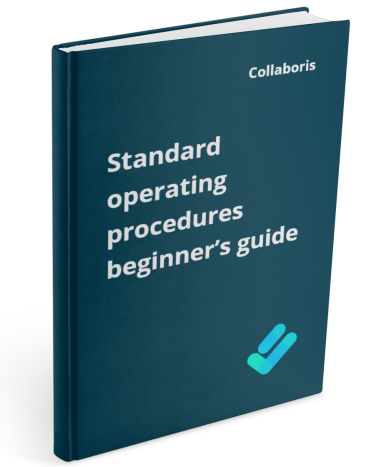Policy Approval Workflow Automated policy approval workflows offer several benefits that can significantly enhance ...
Increasing Employee Engagement in Policy Management (part 2)

Part one of this post covered the connection between employee engagement and compliance, the benefits of involving employees in policy management as well as accessibility and training tips. Read part one here.
Gamification and Interactive Learning
Gamification is a powerful tool that can be used to enhance engagement in various contexts, including policy learning. By incorporating interactive elements, quizzes, and challenges, organizations can make the process of policy learning more engaging and enjoyable for employees. This not only increases their motivation to learn but also improves their understanding and retention of important policy information.
Enhancing Engagement through Gamification
When it comes to policy learning, traditional methods often fall short in capturing employees' attention and maintaining their interest. However, by introducing gamification elements, organizations can create an immersive and interactive learning experience that keeps employees engaged throughout the process.
One way to incorporate gamification is by integrating interactive elements into policy learning modules. For example, instead of presenting information in a static format, organizations can use interactive videos or simulations that allow employees to actively participate in the learning process. This hands-on approach not only makes the learning experience more enjoyable but also helps employees apply their knowledge in practical scenarios.
Another effective strategy is to include quizzes and challenges within the policy learning program. By testing employees' understanding of key concepts and providing immediate feedback, quizzes not only reinforce learning but also add an element of competition. Employees can earn points or badges based on their performance, creating a sense of achievement and motivating them to continue learning.
Successful Examples of Gamification in Policy Management
Several organizations have successfully implemented gamification strategies to increase employee engagement in policy management. One example is a Company that developed a policy learning platform that incorporates gamified elements. Employees are encouraged to complete policy modules and quizzes, earning points and unlocking achievements as they progress. This has resulted in higher participation rates and improved policy compliance within the organization.
Another successful case is a Company, which introduced a policy challenge game for its employees. The game presents real-life policy scenarios and allows employees to make decisions based on their understanding of company policies. By gamifying the learning process, the Company has not only increased employee engagement but also enhanced their policy comprehension and decision-making skills.
Gamification is a valuable tool for increasing engagement in policy learning. By incorporating interactive elements, quizzes, and challenges, organizations can create a more engaging and effective learning experience for employees. The successful implementation of gamification strategies by organizations demonstrates the positive impact it can have on employee engagement in policy management.
Recognition and Rewards
Recognizing compliant behavior can have a significant impact on boosting engagement within an organization. When employees feel that their efforts to follow policies and regulations are acknowledged and appreciated, it creates a positive work environment that fosters motivation and commitment.
Implementing reward systems or acknowledgments for employees who consistently adhere to company policies is an effective way to reinforce compliant behavior. By providing tangible incentives such as bonuses, promotions, or special recognition, organizations can encourage employees to maintain compliance consistently. This not only motivates individuals to continue following policies but also sets a standard for others to emulate.
Acknowledging employees' efforts to maintain compliance has a positive impact on their morale and job satisfaction. When employees receive recognition for their dedication to upholding policies, they feel valued and appreciated. This recognition serves as a form of validation for their hard work and reinforces their commitment to compliance. As a result, employees are more likely to remain engaged, productive, and loyal to the organization.
Furthermore, acknowledging compliant behavior can also create a culture of accountability and trust within the workplace. When employees see that their colleagues are being recognized for their adherence to policies, it sets a precedent for everyone to prioritize compliance. This leads to a more cohesive and harmonious work environment where everyone understands the importance of following rules and regulations.
Continuous Feedback Loop
Importance of an Ongoing Feedback Loop between Employees and Policy Management
Having an ongoing feedback loop between employees and policy management is crucial for the smooth functioning of any organization. This two-way communication channel allows for valuable insights, suggestions, and concerns to be shared, leading to continuous improvement in policies and their practicality.
Soliciting Feedback for Policy Improvements
By actively seeking feedback from employees about existing policies and their practicality, organizations can identify areas that need improvement. Employees are the ones who directly experience the impact of policies on their day-to-day work, so their input is invaluable. Soliciting feedback creates a sense of ownership and involvement among employees, making them feel valued and heard.
Role of Constructive Feedback in Adapting Policies
Constructive feedback plays a vital role in adapting policies to changing circumstances. As the business landscape evolves, policies need to be flexible enough to accommodate new challenges and opportunities. By encouraging employees to provide constructive feedback, organizations can gather valuable insights on how policies can be adapted to meet evolving needs. This feedback helps policy management teams make informed decisions and implement necessary changes effectively.
An ongoing feedback loop ensures that policies remain relevant, effective, and aligned with the organization's goals. It fosters a culture of continuous improvement and empowers employees to contribute to the growth and success of the organization. By valuing and acting upon employee feedback, organizations can create a positive work environment where everyone feels heard and supported.
Creating a Culture of Engaged Compliance
The key points discussed above emphasize the significance of a mutually beneficial relationship between engaged employees and effective policy compliance. It is essential for organizations to adopt strategies that promote active employee involvement in policy management and compliance to foster a positive culture.
If you missed part one of this post, please click here
Get your free Standard Operating Procedures guide
Creating Standard Operating Procedures for your organisation doesn't have to be complicated. This guide will introduce you to the whole lifecycle from creation to training and distribution.
You may also like:
January 17, 2025
January 7, 2025
Creating policy review reminders in Office 365 You might want to set up a ...
December 19, 2024
Podcast: Implementing effective healthcare procedures Implementing effective healthcare procedures is an ongoing process. It ...
December 19, 2024
Podcast: 10 Powerful Strategies for Employee ComplianceOrganizations face challenges in ensuring employee compliance with ...
December 8, 2024
AI Warns About Itself: How I Asked AI to Create a Podcast on the ...
November 4, 2024
Benefits of writing SOP's In any organization, standard operating procedures (SOPs) are critical to ...

